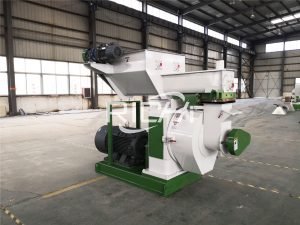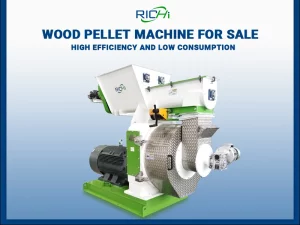Constructing a wood pellet production line is a complex endeavor that demands meticulous planning and execution across various disciplines, particularly civil engineering. Civil engineers play a pivotal role in ensuring the structural integrity, efficient layout, and seamless integration of the production line with its surrounding infrastructure. Here’s a comprehensive look at the critical civil engineering considerations involved:
Site Preparation and Layout
The initial phase in constructing a wood pellet production line involves meticulous site preparation and layout planning:
- Site Selection: Identifying a suitable location based on proximity to raw material sources, transportation networks, and adherence to zoning regulations.
- Topographical Surveys: Conducting detailed surveys to assess terrain, soil conditions, and existing infrastructure, guiding the overall layout.
- Site Clearing and Grading: Clearing the site of obstacles and grading the land to create a level surface conducive to construction.
- Layout Design: Optimizing the placement of facilities such as production buildings, raw material storage, finished product warehouses, and auxiliary structures like offices and workshops.
Building Construction
Civil engineers oversee the construction of key structures essential for operations:
- Foundation Design: Developing robust foundations capable of supporting heavy equipment and accounting for local soil conditions and seismic considerations.
- Structural Design: Ensuring compliance with building codes, safety standards, and resilience against environmental factors like wind and temperature fluctuations.
- Material Selection: Choosing durable, fire-resistant materials such as concrete, steel, or pre-engineered metal buildings.
- Utility Integration: Incorporating electricity, water supply, natural gas connections, and waste management systems into building designs.
Related post:https://www.pellet-richi.com/wood-pellet-production-line/wood-pellet-production-line-in-italy.html
Utilities and Infrastructure
Efficient utility infrastructure is critical for uninterrupted production:
- Utility Connections: Establishing connections to local grids or on-site power generation, water supply networks, and gas pipelines where applicable.
- Waste Management: Designing facilities for managing solid waste, wastewater treatment, and air emissions to meet environmental regulations.
- Stormwater Management: Implementing systems for collecting, treating, and responsibly discharging stormwater runoff to prevent soil erosion and minimize environmental impact.
- Access Roads and Parking: Constructing roads, loading/unloading areas, and parking facilities to facilitate material and personnel movement.
Material Handling Systems
Efficient material handling systems ensure smooth operations throughout the production line:
- Conveyor Systems: Installing belt conveyors, screw conveyors, or pneumatic conveyors to transport materials between processing stages.
- Vertical Movement Systems: Implementing bucket elevators or pneumatic conveyors for vertical material transport.
- Storage Facilities: Designing raw material storage areas, silos, and finished product warehouses with proper ventilation, fire protection, and accessibility.
- Loading/Unloading Areas: Constructing dedicated spaces for safe and efficient loading/unloading of materials, considering truck maneuverability and weight capacities.
Environmental Compliance and Sustainability
Adherence to environmental regulations and sustainability principles is paramount:
- Environmental Impact Assessments: Conducting thorough assessments to identify and mitigate risks related to air emissions, water and noise pollution, and waste management.
- Stormwater Management: Utilizing sustainable practices like permeable pavements or retention ponds to minimize water impact.
- Energy Efficiency: Incorporating energy-efficient designs such as optimized building orientation, insulation, and natural lighting to reduce overall energy consumption.
- Renewable Energy Integration: Exploring options like solar panels or wind turbines to offset energy demands and reduce carbon footprint.
Close collaboration among civil, mechanical, electrical, and environmental engineers ensures seamless integration of all components within the wood pellet production line. Rigorous inspections, quality control measures, and adherence to industry standards guarantee safety, efficiency, and long-term sustainability of the facility.
By addressing these civil engineering aspects comprehensively, stakeholders in the wood pellet production industry can develop facilities that not only meet operational needs but also contribute to a sustainable and environmentally responsible future.



